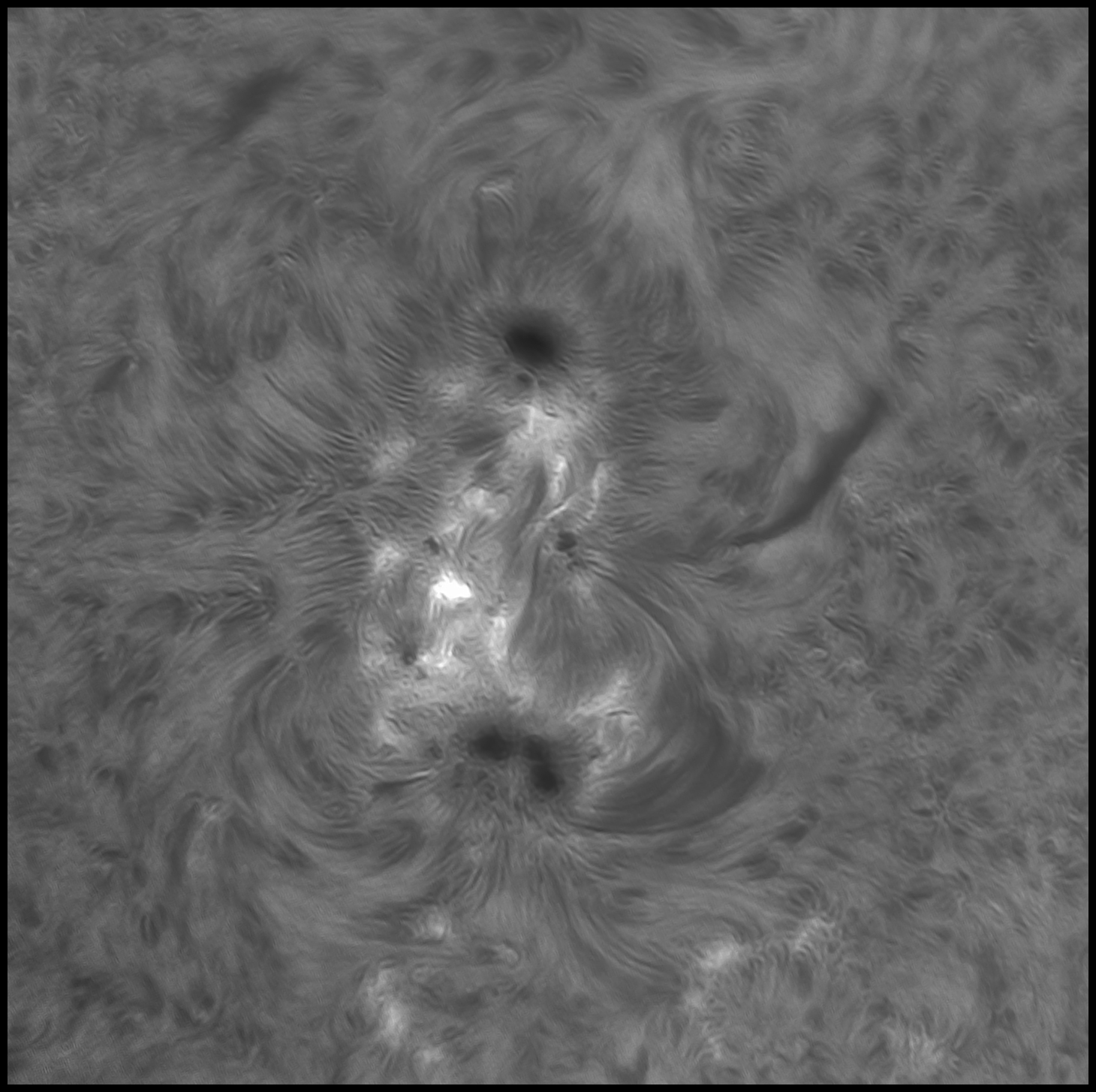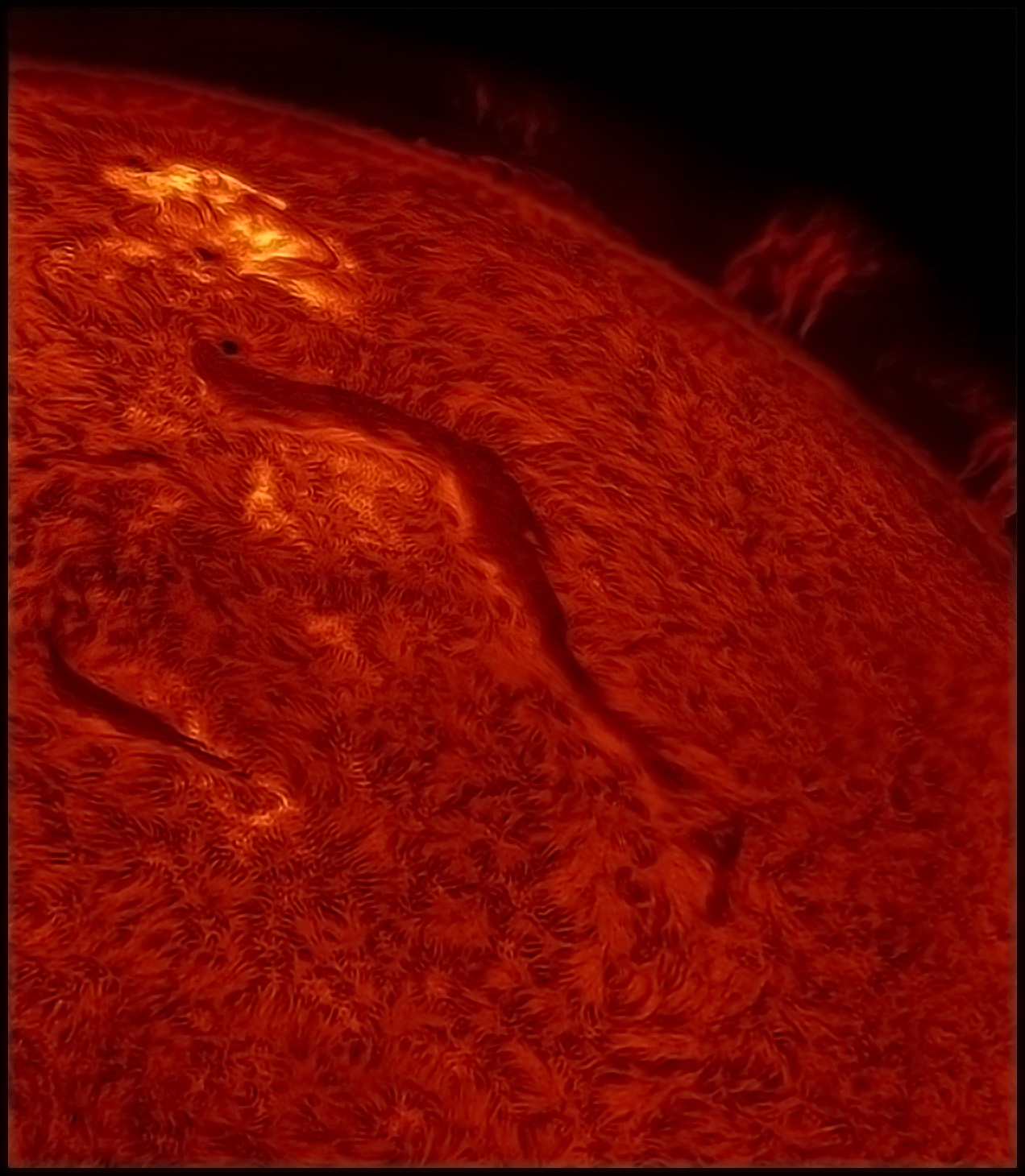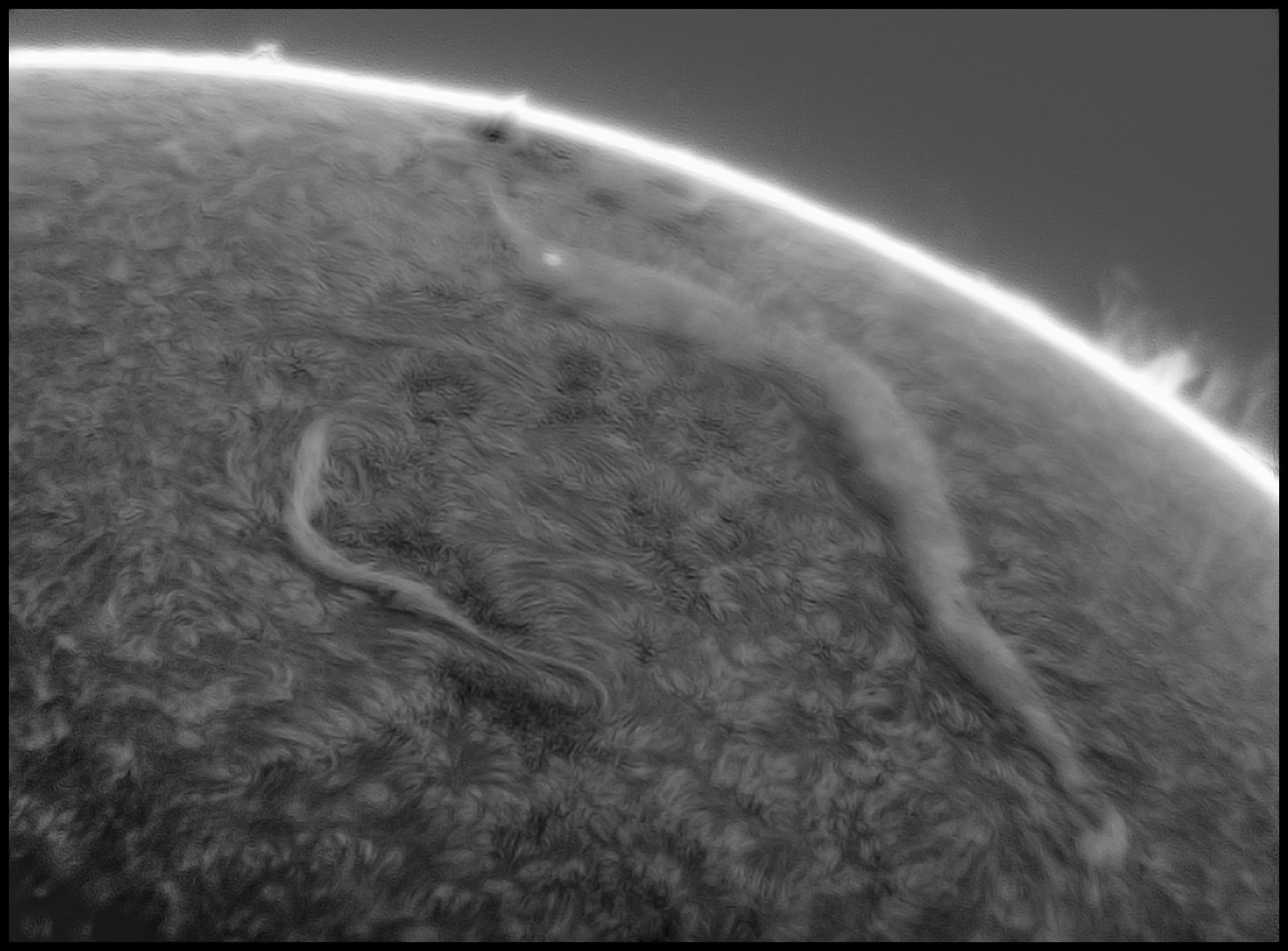Clear, Smooth Air
06/21/2022. This morning the air was still and dry, the sun brilliant. The mount's alignment in the south yard was good, focus looked spot on. So, just for shits and giggles, I tried a 10,000 frame clip. I used a 2400x2080 R.O.I. centered on the most active solar region of the moment. It's one of those "God's iron filings" displays. High clouds moved in late in the run -- I was getting 55 fps, but 10k frames still takes a while -- so I cut the sample short. This image is built from the best 2,000 frames of the first 8,500. The other images are from full-frame clips (which still come down at 50 fps and work well with careful flat-fielding).

If you don't click to make it big, you're missing a great deal of the fun.
Best 2,000 of 8,500 1.5ms exposures, unity gain.
Not that there's anything wrong with yesterday's take. Here's a colorful look at the same active region shown on the previous page as it begins to rotate off the face of the Sun. Make it big if you like.

Two full-frame clips. Best 500 of 2,000 each.
And here's today's look at the same region as it draws even closer to the receding limb (with apologies to Alan Friedman and other sungazers who have perfected the reversed-disk presentation I am working toward here). And yes, guess what happens if you click on it.

Full frame clip. Best 500 of 2,000.